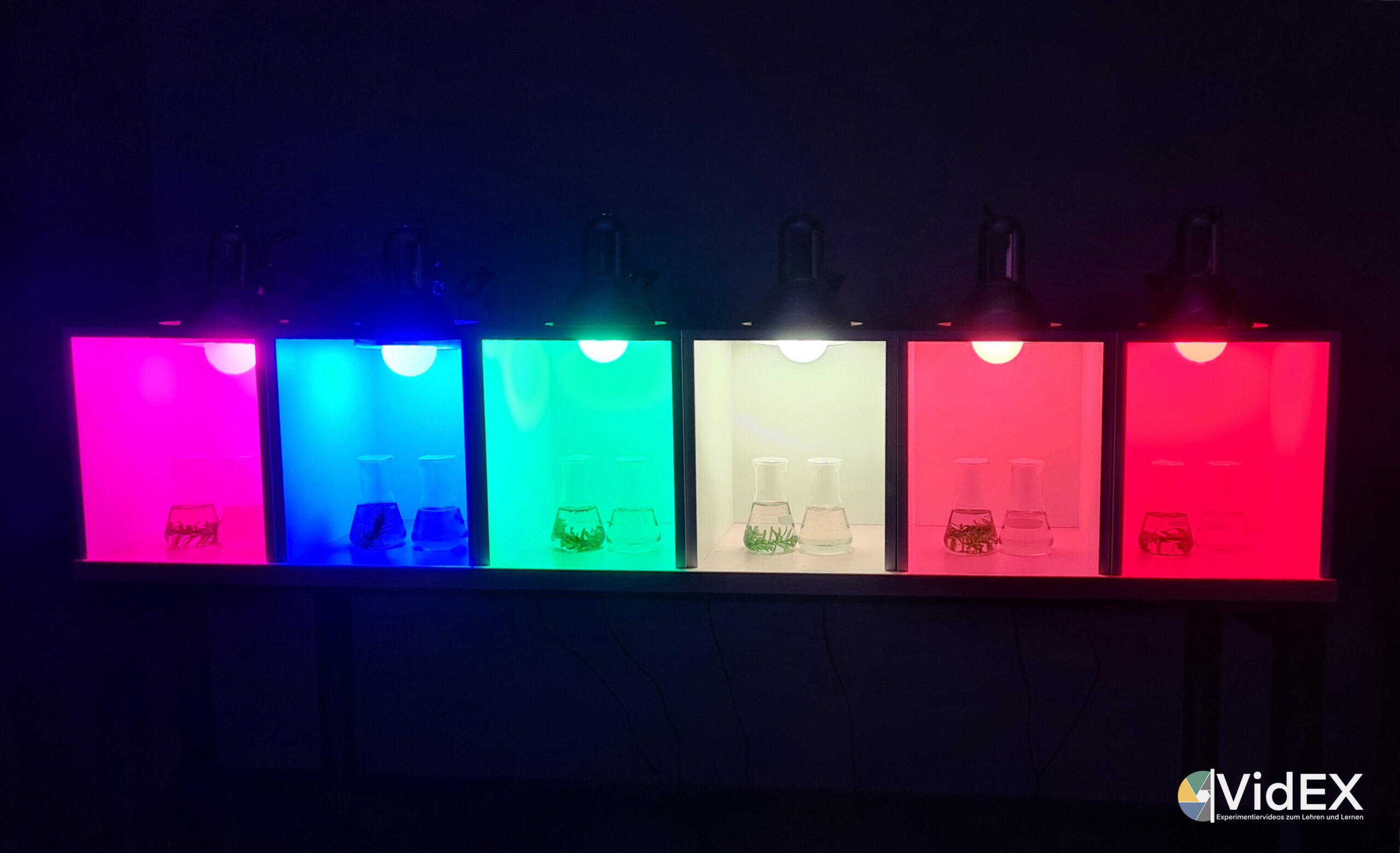
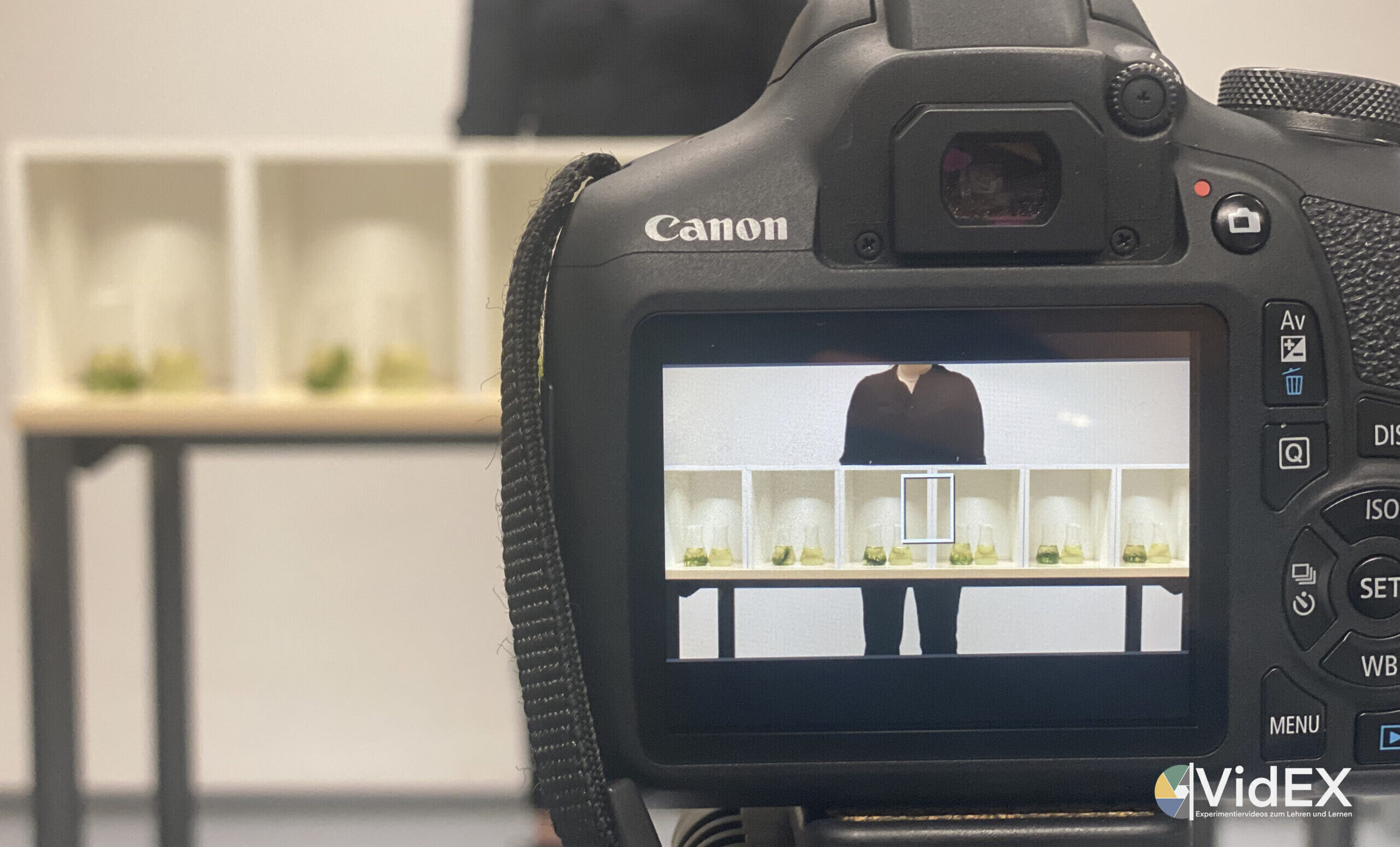
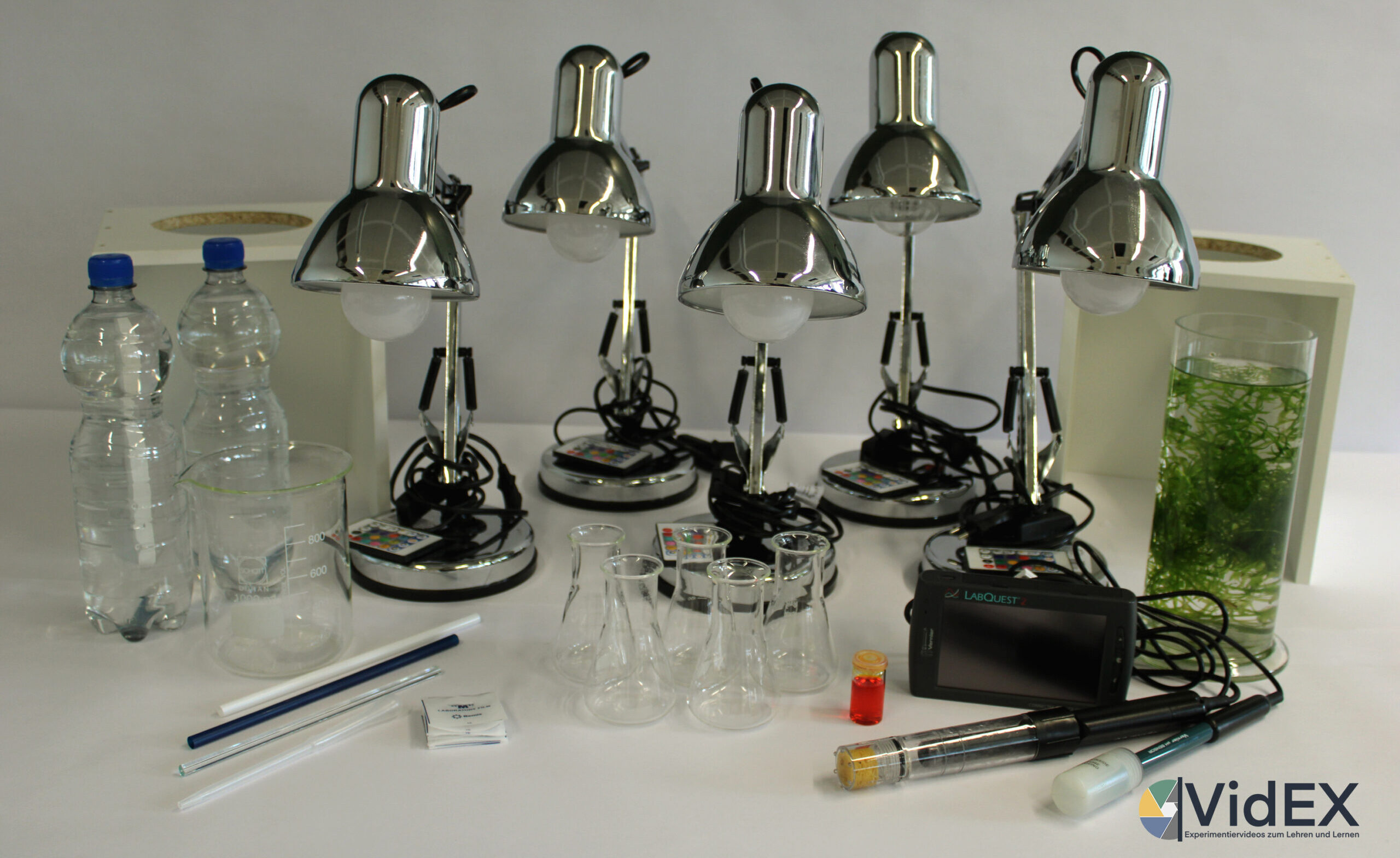
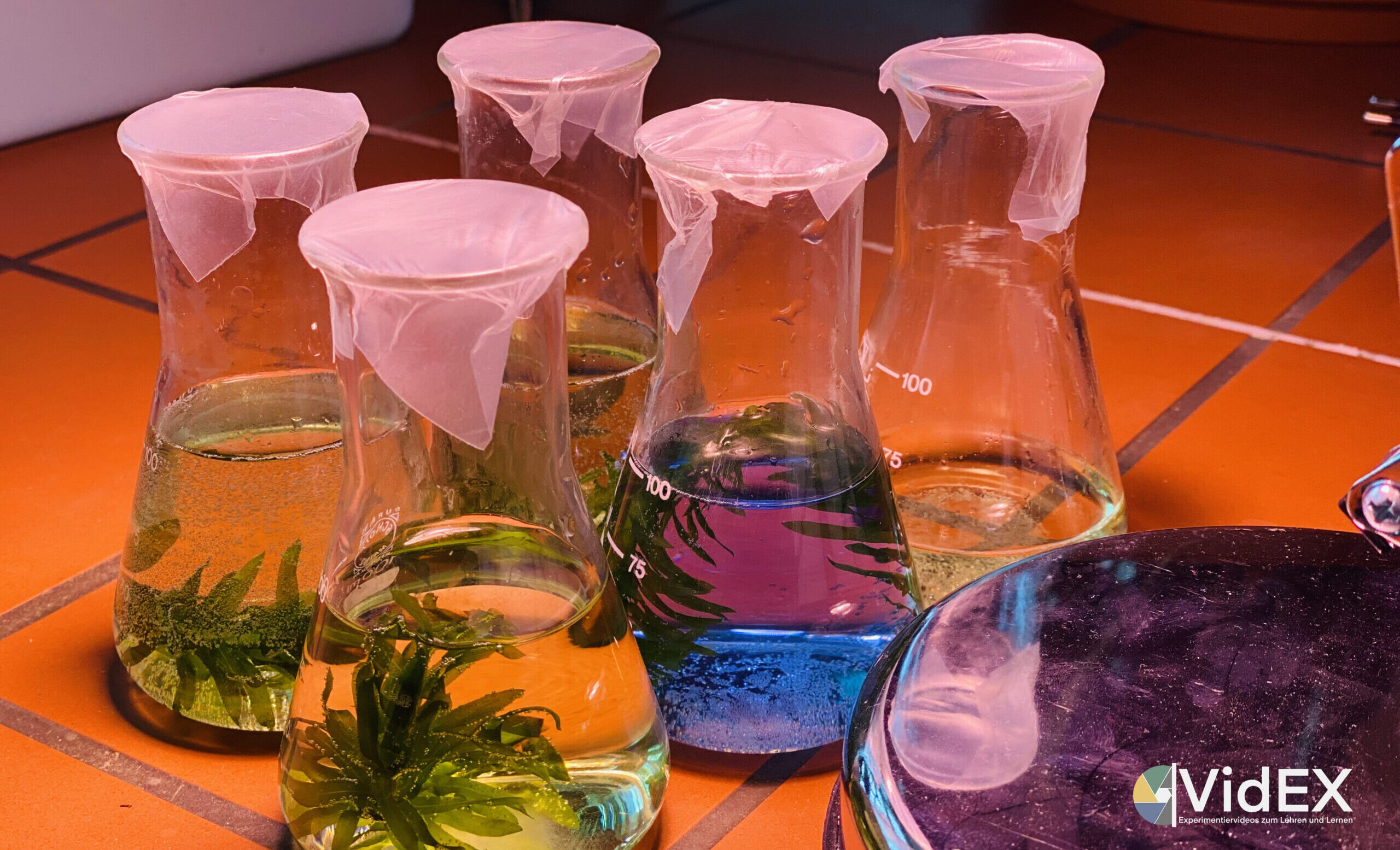
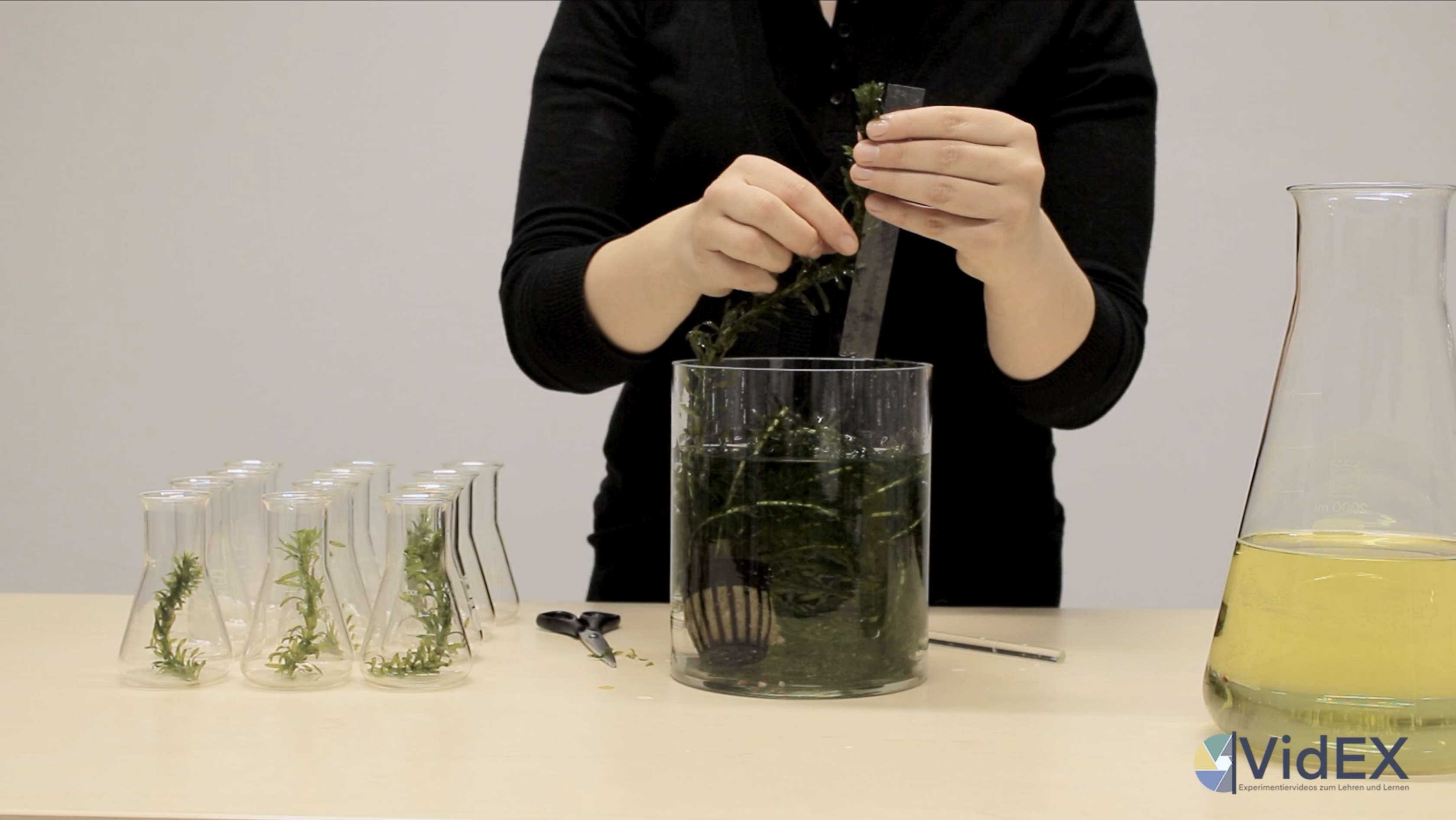
Photosynthesis is together with cellular respiration the most important metabolic process, which has a significant influence on life on Earth. Primarily plants, but also algae and bacteria, can use the radiation energy of sunlight with the help of chlorophyll, to produce energy-rich compounds such as Glucose. The topic of photosynthesis is encountered by students in biology lessons in Sekundarstufe 1 and in the upper school (Oberstufe). In this module, students are given the opportunity with visual support to experimentally explore the underlying subject of light-dependent photosynthetic activity by collecting and analysing data.
Elodea in the spotlight – Using different wavelengths to gain knowledge.

Illustration from Julia Heise, 2023, CC BY-NC 4.0
Lettuce from the assembly line or fruit for the basement? Indoor gardening/ farming makes it possible.
Fresh fruit and vegetables at any time of the year? Sounds unbelievable, but it is the future. Not only climate change but also increasing urbanisation and the world’s population are forcing different thinking in the food industry. Indoor gardening/ farming is a new approach to meet the demand for fresh food. The idea of growing plants without sunlight originated in space technology and is increasingly being developed and implemented on Earth. One of the biggest challenges is securing the necessary abiotic factors. Especially light, which is indispensable for building energy-rich compounds, must be made available to the plants. But not all light is the same – in order to promote high-yield growth, special lamps are needed that particularly stimulate the chlorophyll in plant cells. The aim of the module is to find out, which light spectrum (wavelengths) favour photosynthesis and therefore also plant growth. auf die Fotosyntheseaktivität untersucht werden. Using the waterweed as a model organism, the effect of different light wavelengths on photosynthesis activity will be examined.
To comprehend and work with the videos, learners should have prior knowledge of photosynthesis. The basic equation and associated reaction processes of photosynthesis are elementary for video-based exploration. In addition, a basic knowledge of chemistry is desirable. Since the use of the pH indicator bromothymol blue is of central importance, the material about the pH-indicator can be used as support in order to explain the chemical process for the colour change, if necessary.
The influence of the wavelength on the photosynthetic activity can be worked out with the video material in small groups or consecutively, depending on the (specially) planned measuring technique.
Both videos first show the experimental set-up (including the production of the indicator) and then move on to the implementation of the experiment. However, the entire experiment is not recorded but the individual experimental approaches are shown at the respective measuring points. During the-learning process, the learners should therefore first develop a research question and a hypothesis, based on phenomena, in order to carry out experimental planning, if necessary, with the help of material images, lists or the start image of the video.
Since the videos on photosynthesis focus on two different measurement methods (direct and indirect measurement) a differentiated approach can also be chosen from the beginning, or the videos can be used individually.
However, one´s own planning can also be compared and reflected with the implementation in the video compared to specialist decisions and difficulties (e.g. creating measurement). Likewise, the evaluation of the data generated allows a reconnection and testing of the established hypothesis.
Promote technical methodological skills via different measurement methods:
In addition to the preparation of the technical connection between wavelength and photosynthetic activity, the unit also offers the possibility to discover and apply different options of measurement data acquisition. Collecting, processing, (error-analytic) evaluation of the measurement data as well as a comparison and contrast of the respective measurement techniques can be focused on via the module.
In Video 1, the data is collected indirectly via the colour changes of the pH indicator. For this purpose, a comparison scale is shown, but can also be made available separately to the students (see material) to read off measurement data and convert it into a numerical value, document it and/ or prepare it graphically.
The direct measurement of specified measured variables (pH value and dissolved oxygen content) is shown in video 2, by using a digital data acquisition system (incl. digital measuring sensors). The measured data can be read off directly and also transmitted to a value table or diagram.
The video material „Photosynthesis“
Determining photosynthetic activity via indirect measurements
This video shows the set-up and implementation (incl. the production of the pH indicator) of the experiment. The indirect measurement is carried out every 30 minutes, using the colour change of the pH indicator and a matching colour scale.
Determining photosynthetic activity via direct measurements
This video shows the set-up, implementation and how the exact measured values are collected for evaluation with digital measuring sensors.
The data collection of the pH values and the dissolved oxygen content takes place every 30 minutes.
Here you can download the experiment-related materials for the two videos. In addition, a background paper on the pH indicator and an overview of the individual wavelengths of the light colour are available.
Authors of this module: Supported by the VidEX team, Laura Pfafferodt is primarily responsible for the video design. She has enriched the VidEX offer enormously with her thesis and her commitment!